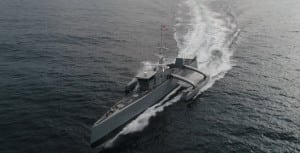
The Defense Advanced Research Projects Agency (DARPA) successfully completed its anti-submarine unmanned vessel program and officially transferred the technology demonstration vessel, called the Sea Hunter, to the Office of Naval Research (ONR) on Tuesday.DARPA said ONR plans to continue developing the Anti-Submarine Warfare (ASW) Continuous Trail Unmanned Vessel (ACTUV) prototype vehicle as the Medium Displacement Unmanned Surface Vehicle (MDUSV). DARPA said ONR may develop it into a new class of unmanned ocean-going vessels that can travel for thousands of miles…

 By
By 











